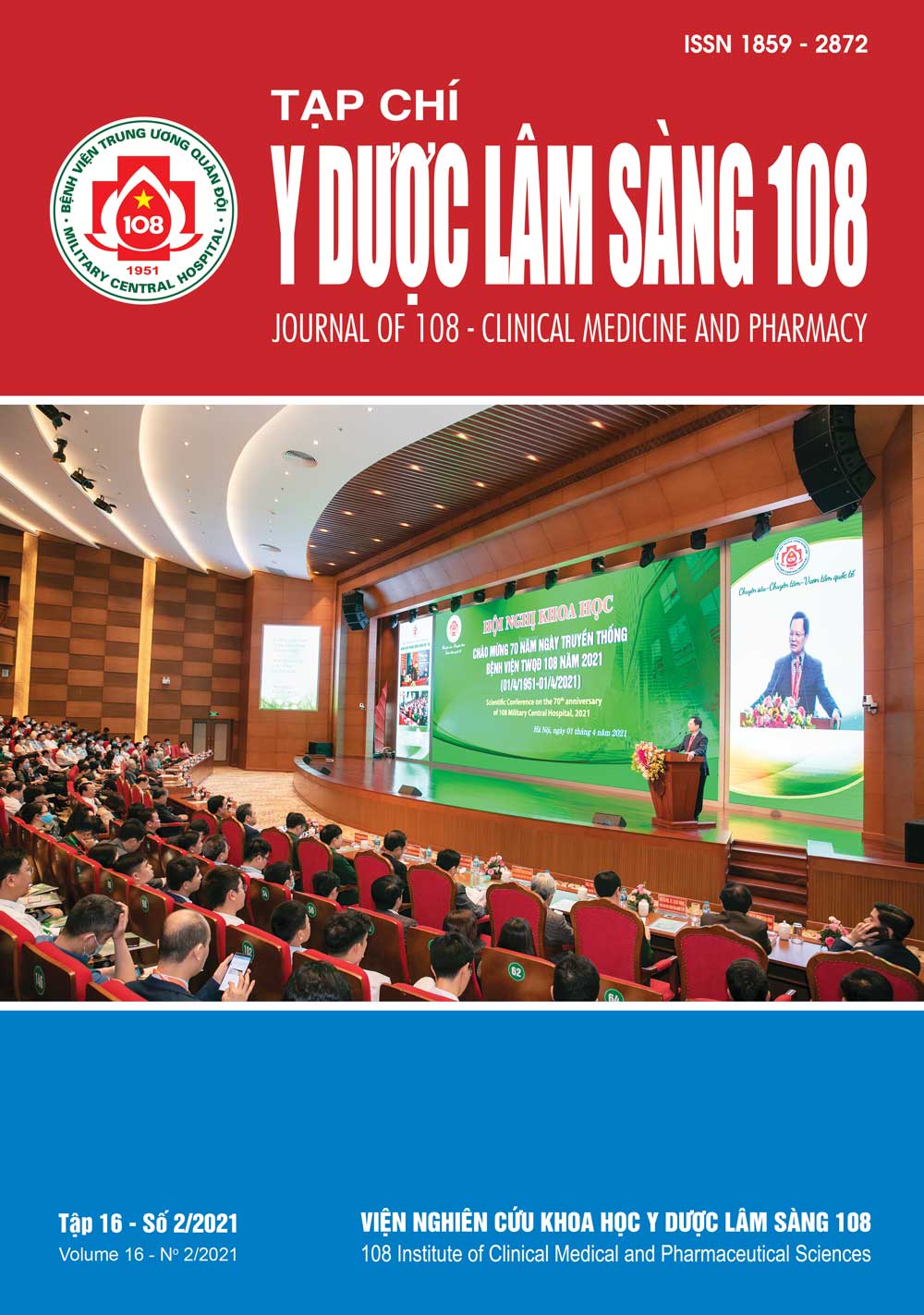Characteristics of some geriatric syndomes and the association with physical function in older patients with chronic kidney disease at National Geriatrics Hospital
Main Article Content
Keywords
Abstract
Objective: To investigate the relationship between demographic characteristics and common geriatric syndromes with physical function in elderly patients with chronic kidney disease at the National Geriatrics Hospital. Subject and method: A cross-sectional descriptive study on 101 patients aged ≥ 60 years old treated at the National Geriatrics Hospital. Patients were interviewed according to uniform questionnaire, physical function was assessed by the Short Physical Performance Battery (SPPB) test: total SPPB point < 10: Impaired physical function. Result: The mean age in the group with reduced physical function was statistically significant higher than those in the group without physical impairment (p<0.05). Patients aged ≥ 80 increased the risk of impaired physical function by 3.84 times (95% CI: 1.47 - 10.38, p<0.05). The proportion of patients with impaired physical function in patients with depression was statistically higher than those in the group without depression (p<0.05). Depression increased the risk of impaired physical function by 6.99 times (95% CI: 1.91 - 31.9, p<0.05). Conclusion: Advanced age and depression were associated with increased impairment of physical function in the elderly with chronic kidney disease.
Article Details
References
2. Guralnik JM, Simonsick EM, Ferrucci L et al (1994) A short physical performance battery assessing lower extremity function: Association with self-reported disability and prediction of mortality and nursing home admission. Journal of gerontology 49(2): 85-94.
3. Cooper R, Kuh D, Cooper C et al (2010) Objective measures of physical capability and subsequent health: A systematic review. Age and ageing 40(1): 14-23.
4. Lattanzio F, Corsonello A, Abbatecola AM et al (2012) Relationship between renal function and physical performance in elderly hospitalized patients. Rejuvenation research 15(6): 545-552.
5. Butterfield G, Thompson J, Rennie M et al (1997) Effect of rhGH and rhIGF-I treatment on protein utilization in elderly women. American Journal of Physiology Endocrinology And Metabolism 272(1): 94-99.
6. Reese PP, Cappola AR, Shults J et al (2013) Physical performance and frailty in chronic kidney disease. American journal of nephrology 38(4): 307-315.
7. KDIGO (2012) Clinical practice guideline for the evaluation and management of chronic kidney disease. Kidney International supplements 3(1).
8. Nguyen Xuan Thanh, Nguyen Ngoc Tu, Nguyen Trung Anh, et al (2019) Polypharmacy at discharge in older hospitalised patients in Vietnam and its association with frailty. Australas J Ageing. 10.1111/ajag.12722. doi:10.1111/ajag.12722.
9. Borson S, Scanlan JM, J Watanabe et al (2006) Improving identification of cognitive impairment in primary care. International journal of geriatric psychiatry 21(4): 349-355.
10. Yesavage JA, Brink TL, Rose TL et al (1982) Development and validation of a geriatric depression screening scale: A preliminary report. Journal of psychiatric research 17(1): 37-49.
11. B Vellas, H Villars, G Abellan et al (2006) Overview of the MNA®-its history and challenges/discussion. The journal of nutrition, health & aging 10(6): 456.
12. Walker SR, Brar R, Eng F et al (2015) Frailty and physical function in chronic kidney disease: The CanFIT study. Canadian journal of kidney health and disease 2(1): 32.
13. Penninx BW, JM Guralnik, Ferrucci L et al (1998) Depressive symptoms and physical decline in community-dwelling older persons. Jama 279(21): 1720-1726.
14. Fried LF, Lee JS, Shlipak M et al (2006) Chronic kidney disease and functional limitation in older people: Health, aging and body composition study. Journal of the American Geriatrics Society 54(5): 750-756.
 ISSN: 1859 - 2872
ISSN: 1859 - 2872
